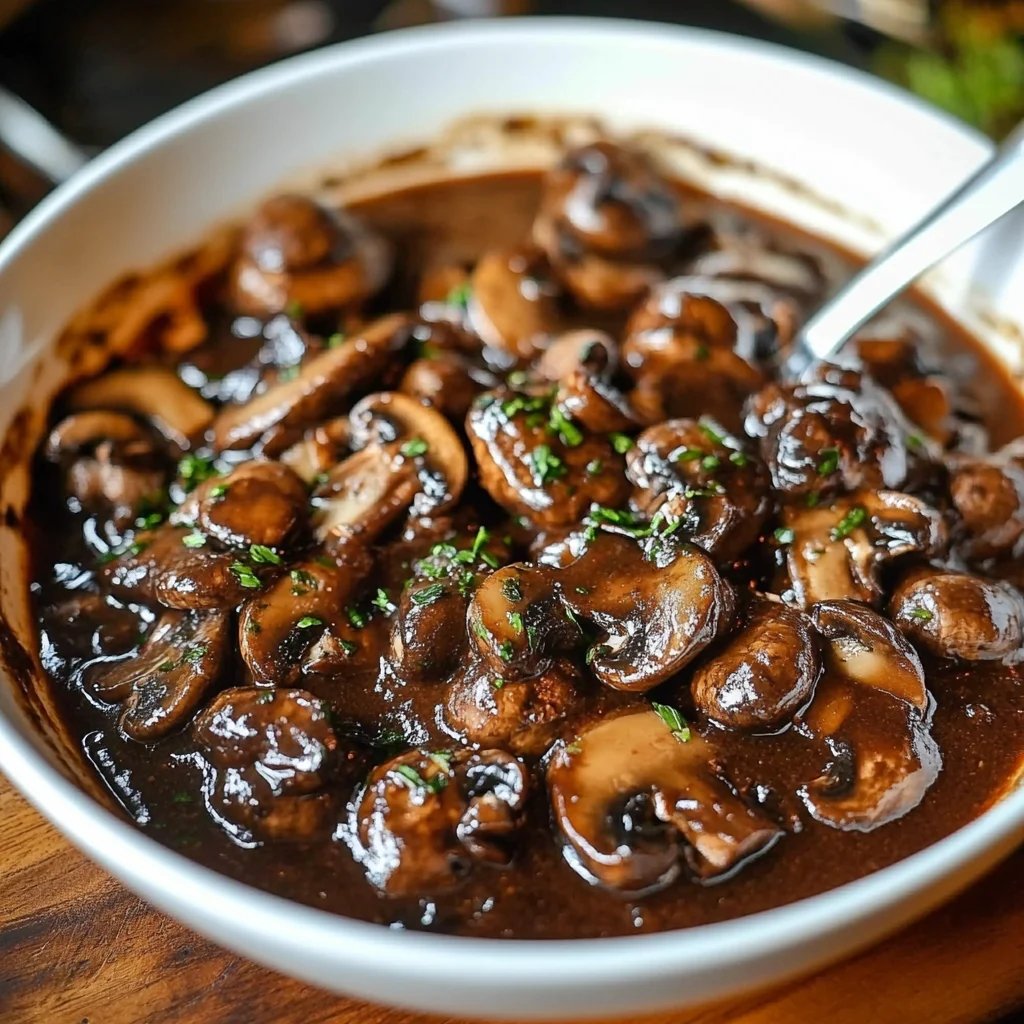Begin by preparing your ingredients. Thinly slice the mushrooms. Aim for even slices to ensure they cook uniformly. Next, finely chop the shallots, ensuring they are small and evenly sized so they melt into the sauce. Mince the garlic as finely as possible to release its full aroma and flavor.
Step 2:
Measure out all the remaining ingredients so that you have them ready to go. Having all the measured and prepped ingredients makes the cooking process smoother.
Step 3:
Melt one tablespoon of unsalted butter along with one tablespoon of olive oil in a large skillet over medium heat. The combination of butter and olive oil provides a balance of flavor and prevents the butter from burning.
Step 4:
Once the butter has melted and the oil is hot, add the sliced mushrooms to the pan. Be careful not to overcrowd the pan, as this can cause the mushrooms to steam instead of brown. If necessary, cook the mushrooms in batches.
Step 5:
Cook the mushrooms for about 5–7 minutes, stirring occasionally, until they are golden brown and slightly crispy around the edges. This step is crucial for developing the deep, earthy flavor of the sauce.
Step 6:
Reduce the heat slightly and add the finely chopped shallots to the pan. Cook the shallots for 2–3 minutes, stirring frequently, until they are softened and translucent. This will mellow their flavor and allow them to blend seamlessly into the sauce.
Step 7:
Next, stir in the minced garlic, cooking for an additional minute until fragrant. Be careful not to burn the garlic, as it can become bitter. The garlic should be aromatic but not browned.
Step 8:
Increase the heat back to medium-high and pour in ¾ cup of red wine. Cabernet Sauvignon or Merlot work particularly well, adding a rich, fruity depth to the sauce.
Step 9:
Use a wooden spoon or spatula to scrape up any flavorful brown bits stuck to the bottom of the pan. These browned bits, known as fond, are packed with flavor and will enhance the overall richness of the sauce. Let the wine simmer for about 5 minutes, allowing it to reduce by half. This reduction concentrates the flavor of the wine and helps to thicken the sauce.
Step 10:
Once the wine has reduced, pour in 1 cup of beef broth and stir in 1 teaspoon of fresh thyme (or ½ teaspoon dried thyme). The beef broth adds a savory depth to the sauce, while the thyme provides a subtle herbal note.
Step 11:
Let the mixture simmer for another 7–10 minutes, stirring occasionally, until the sauce has thickened to your desired consistency. If you prefer a thicker sauce, you can whisk in 1 tablespoon of all-purpose flour mixed with 2 tablespoons of cold water to create a slurry, and then stir it into the simmering sauce. If you want a creamier texture, stir in 1 tablespoon of heavy cream during the last minute of cooking.
Step 12:
Taste your sauce and adjust the seasoning as needed. Add salt and freshly ground black pepper to taste. Remember that the sauce's flavor will continue to develop as it cools, so don't over-season it.
